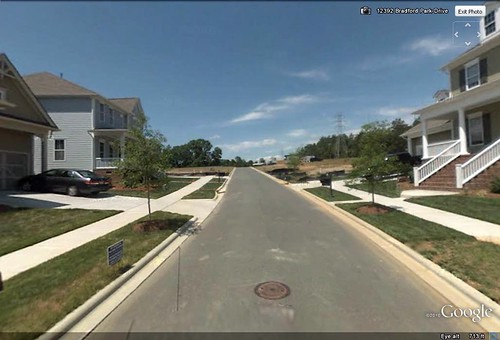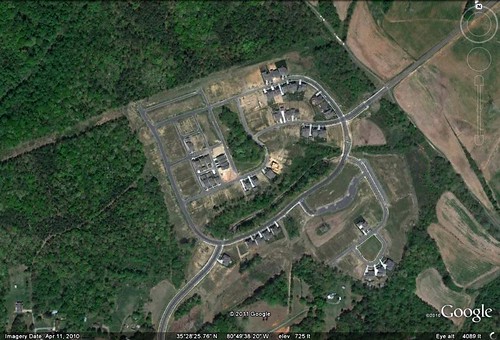It's in the data: sprawl begets more sprawl

Posted February 7, 2011 at 1:31PM
We all thought it did, right? Build a bit of leapfrog development somewhere and soon it will attract other development around it. It turns out our instincts have been right, and the phenomenon can be observed even when other influential factors are also present. This means that environmental reviews of new suburban development should consider not only the site-specific impacts of a new project, but also the impact of development it may induce nearby.
So say Bev Wilson and Yan Song in the new edition (Winter 2011) of the Journal of the American Planning Association. The article is titled “Do Large Subdivisions Induce Further Development? A Spatially Explicit Hazard Analysis of Land Use Change in Charlotte,” and it’s available to JAPA subscribers here. The authors are on the planning faculties of the University of Illinois and University of North Carolina, respectively.
Wilson and Song set out to test the hypothesis that “large-scale [10 acres or more] residential subdivisions represent an intense, localized change in land use that exerts priming effects on subsequent land use decisions.” The region studied, the suburbs of Mecklenburg County, North Carolina that surround the city of Charlotte (photos), has been fast-growing, with a population increase of 19 percent in only six years from 2000 to 1006. The researchers examined a database of over 5,000 sites and identified 712 “land subdivision events” (basically parcelization in anticipation of development) in the period from 2002 to 2008.
The authors found that “adding one large subdivision event within one-quarter mile of the parcel in the previous period was associated with a 42 percent increase in the odds of the parcel subdividing.” In other words, we’re much more likely to see a new subdivision cropping up near a recently built one than we are to see it where there has been no previous development. Or, put yet another, perhaps unsurprising, way: sprawl spreads.
Wilson and Song found a number of other factors that increased the likelihood of new development, including being near the I-485 freeway, being near a rail corridor, and being near demolition activity, but none of these was as influential as being near previous development. If I read the article correctly (the hyper-academic statistical analysis does not lend itself to easy understanding), the presence of mixed-use development decreases the likelihood of new subdivision, as do higher property taxes and location within a nonresidential neighborhood. The authors suggest that some of this may be due to restrictive zoning.
Wilson and Song believe that nearby development increases a developer’s confidence in a potential new subdivision:
“We interpret these findings as indicating that land developers, like other entrepreneurs, tend to be risk averse and attuned to trends and signals in the market. Large subdivision projects send at least two clear signals to other members of the development community: that residential development in the area is profitable, and that development proposals in this location are likely to be approved, or at least have a reasonable chance of being approved, by local government.”
For environmentalists and smart growth advocates who prefer that development occur on infill parcels rather than on forest- and farmland outside the current development footprint, the most important implication is that environmental review of a proposed project should include review of not just its likely site-specific effects but also those of additional development that could be induced nearby. Here’s how the authors put it:
“These results suggest that focusing on site-level impacts is too narrow. Large, residential subdivisions in particular warrant increased attention during the review process, not only for their localized impacts on traffic, storm water, schools, and emergency services, but also for the signals these projects communicate to the larger development community . . .
“We hope our findings will focus attention on the cumulative effects of land conversion for residential use, not only over space but over time.”
Wilson and Song say their findings corroborate previous assumptions that major residential subdivisions drive further land conversion.
Move your cursor over the images for credit information.


